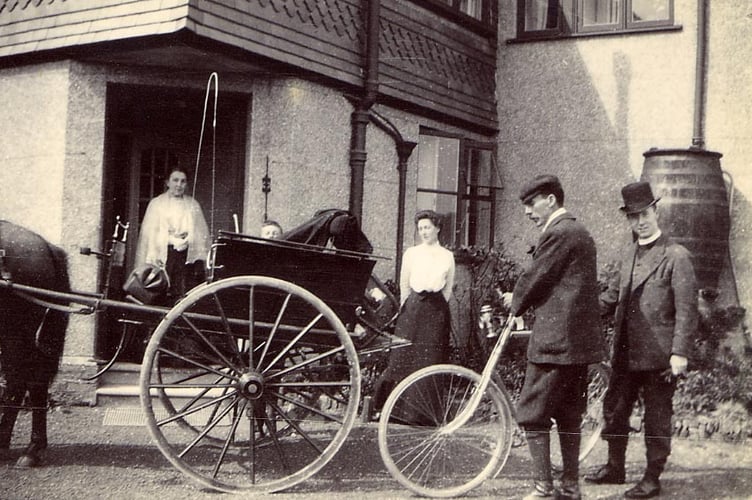Top Stories
Cyclists Spark Debate in 1896: Rise of the Bicycle Threatens Tradition

The late 19th century witnessed a growing tension between cyclists and traditional transport methods as bicycles gained significant popularity. In a piece published on August 29, 1896, the Farnham Weekly Herald highlighted concerns over the rapid adoption of bicycles, noting that they were “displacing the horse” as the primary means of transport. As the bicycle became a common sight on the roads, discussions about its impact on society intensified.
In the county of Middlesex, authorities responded to this shift by implementing regulations for cyclists. A new bylaw mandated that all vehicles must carry lighted lamps one hour after sunset and one hour before sunrise. This legislation underscored the growing recognition of bicycles as legitimate vehicles, even as some community members expressed skepticism about their practicality.
Across the English Channel, the enthusiasm for cycling manifested in the establishment of a dedicated market in Paris. The Herald reported, “A market exclusively for the sale of cycles has been opened in Paris.” While the concept was seen as innovative, the article suggested that the financial viability of such a market might be questionable, particularly in a city known for its vibrant cycling culture.
Despite the burgeoning interest in cycling, issues of gender equality remained a significant barrier. The article noted that female bicycle racing faced resistance in Canada, where efforts to suppress these events were reported. “Promoters are warned that the board will blacklist any track upon which hereafter female bicycle riders are allowed to race before the public,” the writer lamented. This stance reflected broader societal attitudes towards women’s participation in sports during that era.
As bicycles became more prevalent, friction arose between cyclists and other transport users. Incidents were reported at stations, such as Willesden Junction, where a porter discarded a bicycle frame as if it were scrap metal. At Victoria Station, a guard was accused of deliberately damaging a cyclist’s pedal. The article captured the frustrations of cyclists, stating, “How doth the festive railway man improve his pensive hours by doing everything he can to smash those bikes of ours.”
These early conflicts foreshadowed the ongoing debates surrounding cycling and its place in urban environments. The rise of the bicycle in the 1890s not only transformed transportation but also ignited discussions about social norms, gender roles, and the integration of new technologies into daily life. As society grappled with these changes, the bicycle emerged as a symbol of both progress and contention, paving the way for future developments in transportation and public policy.
-

 Entertainment2 weeks ago
Entertainment2 weeks agoAnn Ming Reflects on ITV’s ‘I Fought the Law’ Drama
-

 Entertainment1 month ago
Entertainment1 month agoKim Cattrall Posts Cryptic Message After HBO’s Sequel Cancellation
-

 Entertainment1 month ago
Entertainment1 month agoKate Garraway Sells £2 Million Home Amid Financial Struggles
-

 Entertainment3 weeks ago
Entertainment3 weeks agoMasterChef Faces Turmoil as Tom Kerridge Withdraws from Hosting Role
-

 Entertainment2 weeks ago
Entertainment2 weeks agoITV’s I Fought the Law: Unraveling the True Story Behind the Drama
-

 Entertainment1 month ago
Entertainment1 month agoAldi Launches Cozy Autumn Fragrance Range Ahead of Halloween
-

 Entertainment1 week ago
Entertainment1 week agoWhere is Tinder Swindler Simon Leviev? Latest Updates Revealed
-

 Entertainment2 months ago
Entertainment2 months agoSpeculation Surrounds Home and Away as Cast Departures Mount
-

 Entertainment1 month ago
Entertainment1 month agoMarkiplier Addresses AI Controversy During Livestream Response
-

 Lifestyle4 weeks ago
Lifestyle4 weeks agoSummer Flags Spark Controversy Across England as Patriotism Divides
-

 Health1 month ago
Health1 month agoWigan and Leigh Hospice Launches Major Charity Superstore
-

 Science2 months ago
Science2 months agoAstronomers Unveil New Long-Period Radio Transient ASKAP J1448−6856




















